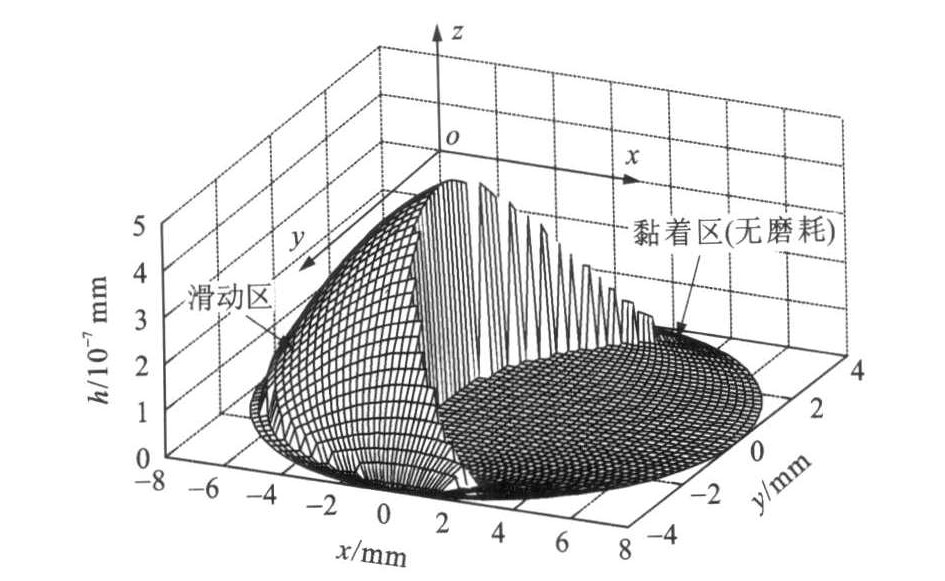Simulation of wheel wear for heavy haul freight car
Article Text (Baidu Translation)
-
摘要: 以装用转K6型转向架的C80型货车为例, 在SIMPACK软件中建立车辆动力学模型, 采用LM型车轮型面和75 kgºm-1级钢轨型面匹配, 并根据大秦线实际情况建立线路模型。基于FASTSIM算法和Zobory踏面磨耗模型, 对重载货车车轮磨耗进行仿真分析, 并与现场实测结果进行对比。研究结果表明: 磨耗主要发生在踏面上-50~45 mm范围内, 轮缘处磨耗最大, 在轮缘根部磨耗最小; 随着运营里程的增加, 轮缘和滚动圆处的磨耗速度变慢; 踏面垂直磨耗量的仿真结果小于现场实测结果; 车轮磨耗后, 车辆临界速度下降, 空车临界速度下降13~18 kmºh-1, 重车临界速度下降2~8 kmºh-1。Abstract: The dynamic model of C80 heavy haul freight car with ZK6 bogies was built in SIMPACK software, LM wheel profile and 75 kgºm-1 rail profile were matched, and a railway line model was built based on Daqin Railway Line. The wheel wear of heavy haul freight car was simulated based on FASTSIM algorithm and Zobory tread wear model, and the simulation results were compared with that of field test result. Analysis result indicates that wear occurs in-50-45 mm of wheel tread, the maximum wear depth occurs in wheel flange, and the minimum wear depth occurs in wheel flange root. The wear velocities of wheel flange and rolling tread circle slow with the increase of running mileage. The vertical wear depth of wheel tread in simulation is less than test depth. The critical velocity of vehicle decreases when wheel is worn, the critical velocity of empty vehicle deceases by 13-18 kmºh-1, and the critical velocity of loaded vehicle deceases by 2-8 kmºh-1.
-
Key words:
- vehicle engineering /
- wheel wear /
- wear model /
- FASTSIM algorithm /
- critical velocity
-
表 1 车轮圆周磨耗深度和轮缘磨耗深度
Table 1. Wear depths of wheel's rolling tread circle and flange
运营里程/104 km 5 10 15 20 25 30 圆周磨耗深度/mm 0.429 5 0.857 0 1.293 7 1.620 6 1.887 9 2.143 1 轮缘磨耗深度/mm 1.099 3 1.753 1 2.208 4 2.513 4 2.822 3 3.240 6 -
[1] BEAGLEY T M. Severe wear of rolling/sliding contacts[J]. Wear, 1976, 36 (3): 317-335. doi: 10.1016/0043-1648(76)90110-1 [2] KRAUSE H, POLL G. Wear of wheel-rail surfaces[J]. Wear, 1986, 113 (1): 103-122. doi: 10.1016/0043-1648(86)90060-8 [3] KALKERJ J. Simulation of the development of a railway wheel profile through wear[J]. Wear, 1991, 150 (1/2): 355-365. [4] PEARCE T G, SHERRATT N D. Prediction of wheel profile wear[J]. Wear, 1991, 144 (1): 343-351. [5] ZOBORYI. Prediction of wheel/rail profile wear[J]. Vehicle System Dynamics, 1997, 28 (2): 221-259. [6] JENDEL T. Prediction of wheel profile wear—comparisons with filed measurements[J]. Wear, 2002, 253 (1): 89-99. [7] BRAGHI N F, LEWIS R, DWYER-JOYCE R S, et al. A mathematical model to predict railway wheel profile evolutiondue to wear[J]. Wear, 2006, 261 (11): 1253-1264. [8] LI Zi-li. Wheel-rail rolling contact andits application to wear simulation[D]. Delft: Delft University of Technology, 2002. [9] ENBLOM R, BERG M. Simulation of railway wheel profiledevelopment due to wear—influence of disc braking andcontact environment[J]. Wear, 2005, 258 (7): 1055-1063. [10] MAGEL E, KALOUSEK J, CALDWELL R. A numerical simulation of wheel wear[J]. Wear, 2005, 258 (7): 1245-1254. [11] 金雪岩, 王夏秋. 直线工况轴重对轮轨磨损影响的试验研究[J]. 西南交通大学学报, 2001, 36 (3): 264-267. doi: 10.3969/j.issn.0258-2724.2001.03.011JIN Xue-yan, WANG Xia-qiu. A laboratory study on the effect of axle-load on the wear of wheel and rail on tangent track[J]. Journal of Southwest Jiaotong University, 2001, 36 (3): 264-267. (in Chinese) doi: 10.3969/j.issn.0258-2724.2001.03.011 [12] 常崇义, 王成国, 金鹰. 基于三维动态有限元模型的轮轨磨耗数值分析[J]. 中国铁道科学, 2008, 29 (4): 89-95. https://www.cnki.com.cn/Article/CJFDTOTAL-ZGTK200804017.htmCHANG Chong-yi, WANG Cheng-guo, JIN Ying. Numerical analysis of wheel/rail wear based on 3D dynamic finite element model[J]. China Rail Science, 2008, 29 (4): 89-95. (in Chinese) https://www.cnki.com.cn/Article/CJFDTOTAL-ZGTK200804017.htm [13] 李霞, 金学松, 胡东. 车轮磨耗计算模型及其数值方法[J]. 机械工程学报, 2009, 45 (9): 193-200. https://www.cnki.com.cn/Article/CJFDTOTAL-JXXB200909030.htmLI Xia, JIN Xue-song, HU Dong. Theoretical model and numerical method of wheel profile wear[J]. Journal of Mechanical Engineering, 2009, 45 (9): 193-200. (in Chinese) https://www.cnki.com.cn/Article/CJFDTOTAL-JXXB200909030.htm [14] 罗仁, 曾京, 邬平波, 等. 高速列车轮轨参数对车轮踏面磨耗的影响[J]. 交通运输工程学报, 2009, 9 (6): 47-53, 63. http://transport.chd.edu.cn/article/id/200906010LUO Ren, ZENG Jing, WU Ping-bo, et al. Influence of wheel/rail parameters on wheel profile wear of high-speed train[J]. Journal of Traffic and Transporation Engineering, 2009, 9 (6): 47-53, 63. (in Chinese) http://transport.chd.edu.cn/article/id/200906010 [15] KALKERJ J. A fast algorithm for the simplified theory of rolling contact[J]. Vehicle System Dynamics, 1982, 11 (1): 1-13. doi: 10.1080/00423118208968684 [16] KALKER J J. Three-dimensional elastic bodies in rolling contact[M]. Dordrecht: Kluwer Academic Publisher, 1990. [17] 金学松. 轮轨蠕滑理论及其试验研究[D]. 成都: 西南交通大学, 1999.JIN Xue-song. Study on creep theory of wheel and rail system and its experiment[D]. Chengdu: Southwest Jiaotong University, 1999. (in Chinese) [18] 丁军君, 李芾. 单侧轨道不平顺数值模拟[J]. 交通运输工程学报, 2010, 10 (1): 29-35. http://transport.chd.edu.cn/article/id/201001006DING Jun-jun, LI Fu. Numerical simulation of one side rail irregularity[J]. Journal of Traffic and Transportation Engineering, 2010, 10 (1): 29-35. (in Chinese) http://transport.chd.edu.cn/article/id/201001006 [19] 胡海滨, 吕可维, 邵文东, 等. 大秦铁路货车车轮磨耗问题的调查与研究[J]. 铁道学报, 2010, 32 (1): 30-37. https://www.cnki.com.cn/Article/CJFDTOTAL-TDXB201001005.htmHU Hai-bin, LU Ke-wei, SHAO Wen-dong, et al. Research on wheel wear of freight cars on Datong-Qinhuangdao Railway Line[J]. Journal of the China Railway Society, 2010, 32 (1): 30-37. (in Chinese) https://www.cnki.com.cn/Article/CJFDTOTAL-TDXB201001005.htm -





 下载:
下载:







